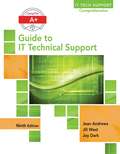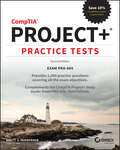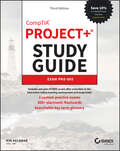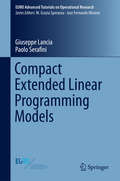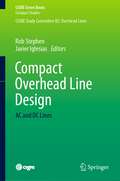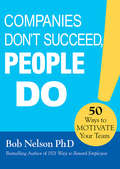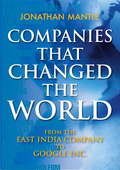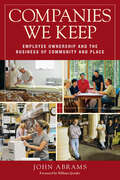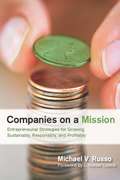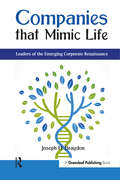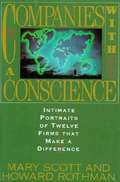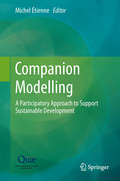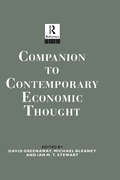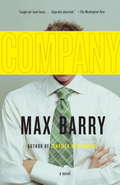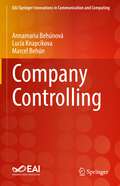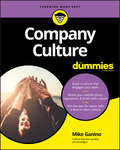- Table View
- List View
CompTIA A+ Guide to IT Technical Support
by Jean Andrews Joy Dark Jill WestThis step-by-step, highly visual text provides a comprehensive introduction to managing and maintaining computer hardware and software. Written by best-selling author and educator Jean Andrews, A+ Guide to IT Technical Support, 9th Edition closely integrates the CompTIA+ Exam objectives to prepare you for the 220-901 and 220-902 certification exams. The new Ninth Edition also features extensive updates to reflect current technology, techniques, and industry standards in the dynamic, fast-paced field of PC repair and information technology. Each chapter covers both core concepts and advanced topics, organizing material to facilitate practical application and encourage you to learn by doing. The new edition features more coverage of updated hardware, security, virtualization, new coverage of cloud computing, Linux and Mac OS, and increased emphasis on mobile devices. Supported by a wide range of supplemental resources to enhance learning with Lab Manuals, CourseNotes online labs and the optional MindTap that includes online labs, certification test prep and interactive exercises and activities, this proven text offers students an ideal way to prepare for success as a professional IT support technician and administrator.
CompTIA A+ Guide to IT Technical Support (9th Edition)
by Jean Andrews Joy Dark Jill WestThis step-by-step, highly visual text provides a comprehensive introduction to managing and maintaining computer hardware and software. Written by best-selling author and educator Jean Andrews, A+ Guide to IT Technical Support, 9th Edition closely integrates the CompTIA+ Exam objectives to prepare you for the 220-901 and 220-902 certification exams. The new Ninth Edition also features extensive updates to reflect current technology, techniques, and industry standards in the dynamic, fast-paced field of PC repair and information technology. Each chapter covers both core concepts and advanced topics, organizing material to facilitate practical application and encourage you to learn by doing. The new edition features more coverage of updated hardware, security, virtualization, new coverage of cloud computing, Linux and Mac OS, and increased emphasis on mobile devices. Supported by a wide range of supplemental resources to enhance learning with Lab Manuals, CourseNotes online labs and the optional MindTap that includes online labs, certification test prep and interactive exercises and activities, this proven text offers students an ideal way to prepare for success as a professional IT support technician and administrator.
CompTIA Project+ Practice Tests: Exam PK0-005
by Brett J. FeddersenAn indispensable study aid for an in-demand project management certification In the newly updated second edition of CompTIA Project+ Practice Tests: Exam PK0-005, veteran tech educator and project manager Brett J. Feddersen delivers an indispensable study aid for anyone preparing for the CompTIA Project+ certification exam or a new career in project management. This new edition is fully revised to reflect recent changes to the Project+ PK0-005 exam, and offers new questions that emphasize the importance of agile and other iterative project management methodologies commonly used in IT environments. You&’ll explore every objective covered by the Project+ exam, including project management concepts, project life cycle phases, project tools and documentation, and the basics of information technology and governance. You&’ll also find: Hands-on and practical information you can use immediately to prepare for a new career in project management, or for expanding your existing skillset Hundreds of domain-by-domain questions that pinpoint exactly where you excel and where you need more training A true-to-life testing format that prepares you for the real-world exam and reduces test anxiety so you can focus on succeeding your first time taking the testA can&’t-miss resource for aspiring and veteran project managers, CompTIA Project+ Practice Tests: Exam PK0-005, Second Edition, belongs in the hands of anyone hoping to master the latest version of the Project+ exam or distinguish themselves on their first day of a new project management job.
CompTIA Project+ Study Guide: Exam PK0-005
by Kim HeldmanPrepare for the Project+ exam and a new career in project management quickly and efficiently with a newly updated guide In the newly revised Third Edition of the CompTIA Project+ Study Guide: Exam PK0-005, veteran project manager and tech educator Kim Heldman delivers a fully updated and comprehensive guide to the foundational CompTIA Project+ exam. This all-in-one study aid focuses on the job-critical skills demanded by employers and will help you hit the ground running on your first day in a new project management role. In this Study Guide, you&’ll learn to manage the project lifecycle, coordinate small- and medium-sized projects, establish communication plans, manage resources and stakeholders, maintain project documentation and artifacts, and support the completion of larger projects within an information technology environment. It also offers: Hands-on, concrete guidance designed to banish test anxiety and prepare you for the entry-level CompTIA Project+ exam Detailed advice on project management concepts, lifecycle phases, project tools and documentation, and IT and governance basics required by on-the-job project managers Complimentary access to Sybex&’s interactive, online learning environment and test bank, complete with an assessment test, hundreds of practice questions, practice exams, electronic flashcards, and a searchable glossary of key termsFull of practical examples and insights drawn from the author&’s extensive, real-world experience, the newest edition of CompTIA Project+ Study Guide: Exam PK0-005, Third Edition, is a must-read for anyone considering a new career in project management or preparing for the CompTIA Project+ exam.
CompUSA: The Computer Superstore
by Ananth Raman Anna McclellandExamines the CompUSA organization, focusing especially on the operations and the company culture. Highlights the economics of PC retailing and the importance of a responsive supply chain for their product category. The description of company culture emphasizes the role of people-management and incentives in achieving responsiveness.
Compact Extended Linear Programming Models (EURO Advanced Tutorials on Operational Research)
by Giuseppe Lancia Paolo SerafiniThis book provides a handy, unified introduction to the theory of compact extended formulations of exponential-size integer linear programming (ILP) models. Compact extended formulations are equally powerful, but polynomially-sized, models whose solutions do not require the implementation of separation and pricing procedures. The book is written in a general, didactic, form first developing the background theoretical concepts (polyhedra, projections, linear and integer programming) and then delving into the various techniques for compact extended reformulations. The techniques are illustrated through a wealth of examples touching on many application areas, such as classical combinatorial optimization, network design, timetabling, scheduling, routing, computational biology and bioinformatics. The book is intended for graduate or PhD students - either as an advanced course on selected topics or within a more general course on ILP and Mathematical Programming - as well as for practitioners and software engineers in industry looking at techniques for developing optimization models for their specific problems.
Compact Overhead Line Design: AC and DC Lines (CIGRE Green Books)
by Rob Stephen Javier IglesiasThis Green Book provides the design engineer with an understanding of the electrical parameters and methods required in designing compact AC and DC lines. Compact AC and DC lines are becoming increasingly necessary due to the limitation of right of way access and the need to upgrade power transfer in existing, narrower line corridors. Another requirement for compact AC lines is the lower impedance permitting increased power flow.For DC power lines, increased power flow can only be realised by increasing the current through the conductors and/or increasing line voltage. In AC it can also be achieved by bundle expansion and phase compaction due to the variation of impedance. The effect of compaction on AC and DC lines is not identical as with the constraints. The Green Book covers the theory relating to the constraints such as corona, audible noise, insulation coordination, electric and magnetic fields and others for both AC and DC lines.In addition to the theory, the Green Book includes actual calculations of electric parameters for different pole (DC) and phase (AC) configurations. Standards applied by various countries are tabulated for easy comparison of practices internationally. Case studies on line compaction designs for both AC and DC are described with relation to pole compaction, pole rearrangement and phase configuration. Voltage upgrading is also treated in this book, and some case studies for both AC and DC are considered.
Compagnie Lyonnaise de Transport (A)
by Michael J. Roberts Michael L. TushmanDescribes the issues surrounding the funding of a centralized research service that supports two related divisions. The company has a very decentralized and financially driven culture, and the centralized service is used unequally, setting up a conflict. A rewritten version of an earlier case.
Compagnie Lyonnaise de Transport (B)
by Michael J. Roberts Michael L. TushmanSupplements the (A) case. A rewritten version of an earlier supplement.
Compagnie du Froid, S.A.
by Robert L. Simons Antonio DavilaThe owner of an ice cream company must evaluate the performance of three regional businesses. To do the analysis, students must flex the budget by seasonal temperature; calculate revenue, volume, price, and efficiency variances; analyze the effects of transfer prices; and calculate return-on-investment. In addition, the owner considers how to set strategic boundaries and how to compensate his managers.
Compania de Telefonos de Chile
by W. Carl Kester Charles M. La Follette Enrique OstaleThe newly privatized Chilean telephone company, Compania de Telefonos de Chile (CTC) must raise substantial new funds externally in order to finance its expansion program. This task is complicated by Chile's small, illiquid capital markets and the skeptical view of Latin American borrowers held by investors outside of the region. CTC's chief financial officer must determine if listing American Depository Receipts (ADRs) on the New York Stock Exchange is a viable financing option for the company.
Companies Don't Succeed, People Do: 50 Ways to Motivate Your Team
by Bob NelsonLearn how to create a clear path to success with an efficient and collaborative team. Everyone has something to offer, you simply need to identify what each of your team members uniquely provides. Uncover your best qualities and imagine the goals that you can achieve with a group of equally talented individuals. No task is too big and no company is too small for a celebrated and strong team. This book is filled with team-building tips, real-life stories, and helpful quotes to begin your shared success. Share your vision and engage with your team members to create an environment that promotes and promises success!
Companies That Changed the World: From the East India Company to Google Inc.
by Jonathan MantleCompanies that Changed the World tells the fascinating stories of 50 joint-stock companies - or companies based on that model - that have exerted a critical influence on the social and economic history of the past four hundred years. As well describing clearly and accessibly the companies' growth and influence over time, and profiling the pioneering entrepreneurs who built them, Jonathan Mantle's text is crammed with intriguing and unexpected information: from the role played by the humble pigeon in the history of news dissemination to how a pharmacist's five-cent patent medicine became the world's most powerful brand. Each of the 50 companies profiled has changed and reflected change in - the world of its time, in far-reaching and often unexpected ways. Together, their stories amount to nothing less than a concise history of commerce and capitalism.
Companies We Keep: Employee Ownership and the Business of Community and Place, 2nd Edition
by John AbramsPart memoir and part examination of a new business model, the 2005 release of The Company We Keep marked the debut of an important new voice in the literature of American business. Now, in Companies We Keep, the revised and expanded edition of his 2005 work, John Abrams further develops his idea that companies flourish when they become centers of interdependence, or &“communities of enterprise.&”Thoroughly revised with an expanded focus on employee ownership and workplace democracy, Companies We Keep celebrates the idea that when employees share in the rewards as well as the responsibility for the decisions they make, better decisions result. This is an especially timely topic. Most of the baby boomer generation—the owners of millions of American businesses— will retire within the next two decades. In 2001, 50,000 businesses changed hands. In 2005, that number rose to 350,000. Projections call for 750,000 ownership transitions in 2009. Employee ownership—in both the philosophical and the practical sense—is gathering steam as businesses change hands, and Abrams examines some of the many ways this is done.Companies We Keep is structured around eight principles—from &“Sharing Ownership&” and &“Cultivating Workplace Democracy&” to &“Thinking Like Cathedral Builders&” and &“Committing to the Business of Place&”—that Abrams has discovered in the 32 years since he cofounded South Mountain Company on the island of Martha&’s Vineyard. Together, these principles reveal communities of enterprise as a potent force of change that can—and will— improve the way Americans do business.
Companies and Entrepreneurs in the History of Spain: Centuries Long Evolution in Business since the 15th century (Palgrave Studies in Economic History)
by María Vázquez-Fariñas Pedro Pablo Ortúñez-Goicolea Mariano Castro-ValdiviaThis book analyses the economic history of the company and entrepreneurship in Spain from the 15th century to the present. It evaluates the economic theory, the formation of the figure of the entrepreneur, as well as the structure of the companies. This exploration of the businessmen in Spain over several centuries is something that has not been done until now. Joining the great Spanish historiographical debate about the existence or not of entrepreneurship, the book brings together research in very different historical contexts and junctures. It presents a selection of cases of companies and entrepreneurs from Spain, from different sectors, regions and periods, from boom to crisis, from the wine businessman to the railway sector, from private banking to the pioneers of the Spanish travel agency business. It will be of interest to academics and students in economic history, business and management history, as well as researchers in entrepreneurship & small business management.
Companies on a Mission: Entrepreneurial Strategies for Growing Sustainably, Responsibly, Profitably
by Michael V. Russo<div><p class="description">"Let your social and environmental conscience be your guide" can be a successful and durable strategy for a firm. This is the first book to explain how following a vision for the earth and for society can be a powerful route to profits for small and medium sized companies.</p> <p class="description"><i>Companies on a Mission</i> explains that mission-driven companies appreciate and leverage traditional strategic principles--with a twist--to win in the marketplace. By clearly and pragmatically laying out this argument, author Michael V. Russo crystallizes for enlightened businesses what Michael Porter made clear for mainstream firms years ago. The book shows that a mission-driven approach creates significant barriers to imitation by larger, established rivals. Mission-driven firms build their brands on authenticity. Only you are you. And, authenticity builds customer loyalty. Later in the book, Russo moves beyond the firm level to look at these companies in context. He finds, for instance, that just as specific industries often develop in geographic clusters, mission-driven companies also aggregate. But, they put down roots where other businesses are pursuing complementary goals. Portland and the Bay Area are two such hotbeds. This allows for cooperation, as opposed to breeding stiff competition.</p> <p class="description">The rise to prominence of mission-driven companies like Patagonia, Seventh Generation, Kettle Foods, and Calvert Group is undoubtedly the result of powerful trends in consumer markets, including the rise of conscious consumerism, the transparency movement, and fallout from global competition. Most books that address social and environmental issues are focused on large corporations, crafted as autobiographies by CEOs, or written as moral calls to action without regard for the bottom line. <i>Companies on a Mission</i> both chronicles a movement and provides grounded guidance to entrepreneurs and managers who wish to join the wave. For these readers, this book is a one-of-a-kind bible.</p></div>
Companies that Mimic Life: Leaders of the Emerging Corporate Renaissance
by Joseph H. BragdonIndustrial capitalism is broken. The signs, which transcend national ideologies, are everywhere: climate change; ecological overshoot; financial exhaustion; fraying social safety nets; corporate fraud; government deceit; civic unrest; terrorism; and war. But there is hope. This book tells how transformation is taking root in the corporate world – the last place many of us would look for solutions. The book tells the stories of seven exceptional companies. Their shared secret is a new mental model of the firm that is the virtual opposite of industrial capitalism. Each company, if not already a household name, is a significant player within their industry and, crucially, has outperformed their competitors. Lessons can be learned. It works like this. Instead of modeling themselves on the assumed efficiency of machines – a thought process that emerged during the industrial age – these firms model themselves on living systems. Firms with open, ethical, inclusive traditions – where employees have a voice and a stake in what happens – have a distinct advantage over traditionally managed companies where most decisions are made at the top. Understanding that everything of value ultimately arises from life, they place a higher value on living assets (people and Nature) than they do on non-living capital assets. The energy they invest in stewarding those assets – a practice described in the book as living asset stewardship (LAS) – is transformative.
Companies with a Conscience: Intimate Portraits of Twelve Firms That Make a Difference
by Mary Scott Howard RothmanThe vision, mission, principles, and compassion that govern twelve successful companies
Companies, Cultures, and the Region: Interactions and Outcomes
by Dieter Rehfeld Stefan Gärtner Nick CliftonEurope has its strength in regional cultural diversity. However, current debates surrounding globalisation and the integration of markets tend to focus on the homogenisation of cultures, whilst the emergence of vital and innovative regional cultures has typically been neglected. This edited collection addresses this gap, considering relevant questions such as how strategies, orientations, values and symbols help a company to become aware of its location, and how different regional cultures are of interest to particular types of companies. The book’s central focus is the interaction of regional and corporate cultures; how different cultures come together, shape each other and change. The volume takes an interdisciplinary approach, bringing together research from cultural science, regional science, social science and economics.This book was originally published as a special issue of the journal European Planning Studies.
Companies, International Trade and Human Rights
by Janet DineOriginally published in 2005, this book focuses on the role of corporations within the trading system, and the complex relationships between corporations, nation states and international organisations. The actions and motives that drive corporations are considered as well as the structure of the international trading system. Remedial devices such as Codes of Conduct and Human Rights instruments are assessed for effectiveness. The book seeks reasons for what is a growing understanding that international trading regimes are not meeting objectives found in many international agreements, including both the international trade agreements themselves (WTO, GATT, TRIPS etc. ) and human rights instruments. In particular, it is clear that the prevalence and severity of poverty is not being adequately addressed. This work sets out to investigate the role played by companies in this failure in the globalisation of trade to realise its aims, in particular the failure to achieve the minimum of basic rights, the right to food.
Companion Modelling: A Participatory Approach to Support Sustainable Development
by Michel ÉtienneThis book introduces the companion modelling approach by presenting the stance that underpins it, the methods and tools used with stakeholders and the specific role of models during the process. It addresses the means to deal with the different levels of decision-making and to take into account the various power relationships. It proposes a methodology to assess the impact of the approach on the stakeholders involved in the process. The book includes 27 case studies and 7 teaching tools that describe the successful use of the approach in a variety of settings or teaching contexts. It is intended for researchers working on rural development or renewable resources management, as well as students and teachers.
Companion to Contemporary Economic Thought (Routledge Companion Encyclopedias)
by Ian Stewart Michael Bleaney David Greenaway Dr Ian Stewart* 41 in-depth essays cover current economic theory and applied economics in a single, comprehensive volume* Interfaces section considers economics as it relates to other disciplines* Extensive notes, bibliographies and suggestions for further reading; detailed index of Topics and People`A treasure-house of stimulating argument and vast amounts of, mostly, well marshalled information. The market for general survey volumes, while already crowded, should surely find room for this offering.' - The World Economy`The work under review scores very high marks.' - The Economic Journal`The chapters are written by people who are excellently qualified and frequently well-known in their field ... The book's strengths lie in the range of contributors, the very high quality of most of the contributors and its emphasis on applied economics. For these reasons alone it is an important book, which will be invaluable both to students and to economists wishing to learn about developments in other branches of their discipline.' - Economica
Company
by Max BarryWhen is physical violence an appropriate response to management policy? Why is that one reserved parking space always empty? And when does helping yourself to an extra doughnut at morning tea become a criminal act? At Zephyr Holdings, no one has ever seen the CEO. The floors are numbered in reverse, the Mission Statement could mean almost anything, and the beautiful receptionist is paid twice as much as anybody else, but appears to do no work. One of the sales reps uses relationship books as sales manuals, and another is on the warpath because somebody stole his doughnut. In other words, it's a typical big company. Or at least, that's what everyone thinks, until fresh-faced employee Jones - too new to understand you just don't ask some questions - starts investigating. Soon Jones uncovers the company's secret: the answer to everything, what Zephyr Holdings really does, and why every manager carries a copy of the Omega Management System. It plunges him into a maelstrom of love, loyalty, management, and corporate immorality - and whether he can get out again? Now that's a good question. In the tradition of William Gibson, Joseph Heller, and Douglas Coupland, COMPANY is a biting, incisive, and delightful satire of corporate culture.
Company Controlling (EAI/Springer Innovations in Communication and Computing)
by Lucia Knapcikova Annamaria Behúnová Marcel BehúnThe book discusses the study and implementation of controlling in the modern enterprise from the perspective of Industry 4.0, which helps ensure the efficient and effective use of organizational resources in order to achieve planned goals. The aim of this book is to provide the most comprehensive and effective exchange of information on current developments in Enterprise Controlling. The authors describe lean/agile approaches that enterprises can use to reach the highest level of competitiveness in a global environment and help establish channels of communication and disseminate knowledge among professionals working in manufacturing and related institutions. The authors aim to help facilitate corporate coordination and help with its planning without deviating from standards. The publication is dedicated to all who want to learn in the field of controlling from researchers and academics to students.
Company Culture For Dummies
by Mike GaninoMake a difference with company culture Organizations around the world are looking for the “secret sauce” to create strong company cultures—and this book lets you in on what you can do to share the same culture that drives places like Google, Southwest, and Wegman’s to succeed. Inside, expert author on corporate culture Mike Ganino distills company culture down to the four core elements that you need to consider when making any business decision. Packed with real-world examples and practical approaches to help you build a culture that drives performance, increases bottom line results, and creates brands that people talk about and remember, this is the book you’ll want to keep close by as you create your own unique culture. Implement and manage cultural change effectively Apply key principles to achieve organizational goals See how new technologies influence organizations Retain employees and attract new talent With this helpful guide, you’ll boost your company’s culture in no time!
